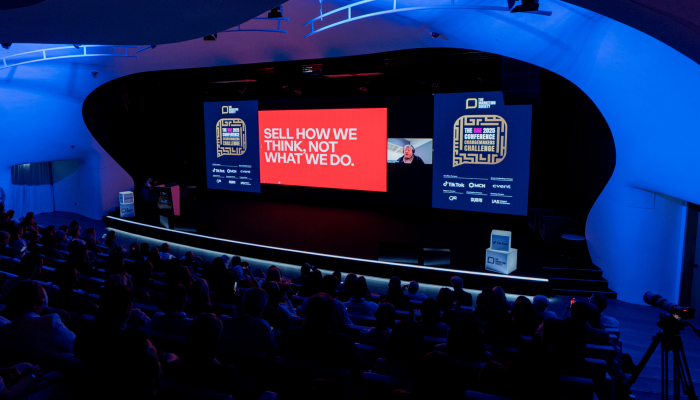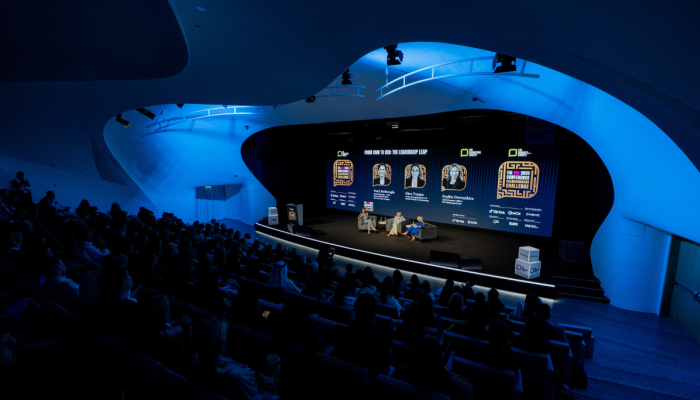What are the best new ideas in business? Thinkers50 was established almost 20 years ago out of a desire to find the best ideas in business.
Every two years it seeks to rank the thought leaders of business – based on the ideas that have created most resonance in the business world, the most distinctive and communicative, the most practical and impactful.
Previous rankings, every two years, have felt a little like a homage to the grand old men of business academia: Peter Drucker, Michael Porter, CK Prahalad, Clay Christensen, and Roger Martin.
So what are the new ideas to win in today’s fast and dynamic world of Asian renaissance, entrepreneurial supremacy, social conscience and intelligent machines?
Here are some of the best new ideas emerging in business, which we will be celebrating at the Thinkers50 Global Awards later in 2019, and can help you find a new edge in leading your own organisation:
Alive at Work
I visit so many world-leading corporations where I am shocked by the lack of energy, humanity and optimism in the workplace. Leaders and managers worn down by corporate life, even if their companies are shaping markets and driving incredible innovations. So how do you bring work back to life?
Dan Cable’s research focuses on employee engagement and organizational culture. In Alive at Work: The Neuroscience of Helping Your People Love What They Do (HBR Press, 2018) the London Business School professor argues that the reason for unhappiness at work is biological: organisations are shutting off the part of our brain that craves exploration and learning, and he identifies the small changes that can make a meaningful impact and restore zest to work.
The Altruistic Corporation
Start-up companies tend to be a lot more democratic. Even the ones who have grown still have a feeling of adventure, experimentation and freedom. Indeed many authors now talk about reinventing organisations with more soul, purpose, and humanity.
Isaac Getz, a professor at the ESCP Europe School of Business in Paris, is the co-author of Freedom, Inc. (Crown Business, 2010) and author of L’entreprise Altruiste (Albin Michel, 2019). He has conceptualised the notions of the freedom-based company, and the liberating leader – one who believes that a workplace based on respect and freedom is a more natural environment for employees than one based on mistrust and control. His latest thinking champions what he describes as “the altruistic corporation”.
The Big Nine
Every other article you read is talking about AI. And mostly about the relationships between technology and humans. Not just about whether humans be replaced and what will we do, but how they work positively together. Yet so much is in the hands of companies like Alibaba and Amazon, Apple and Google, Facebook and Tencent.
Amy Webb is professor of strategic foresight at New York University’s Stern School of Business, and describes herself as a quantitative futurist. Her latest book The Big Nine: How The Tech Titans and Their Thinking Machines Could Warp Humanity (PublicAffairs, 2019) fires a warning shot about the implications of artificial intelligence, and the overwhelming power of the “big nine” corporations in the US and China that are turning the human-machine relationship on its head.
Blitzscaling
Starting up is easy, scaling up is hard. So many entrepreneurs talk about the challenges of turning a cool idea into a successful commercial business. Scaling can be painful. Do it faster.
Reid Hoffman is co-founder of LinkedIn and partner at Greylock, Hoffman is the author (with Chris Yeh) Blitzscaling: The Lightning-Fast Path to Building Massively Valuable Companies (Crown, 2018), which argues that a speed-to-scale strategy – “blitzscaling” – is the secret to capturing the market. Hoffman offers a specific set of practices for startups to create and manage dizzying growth, by prioritizing speed over efficiency in an environment of uncertainty. He is also co-author of The Start-up of You (with Ben Casnocha, Random House, 2013) and The Alliance (with Ben Casnocha and Chris Yeh, HBR Press, 2014).
Buurtzog
Healthcare is one of the most exciting sectors right now. From Devi Shetty’s incredible reinvention of healthcare in India to Anne Wojcicki’s data-driven future in Silicon Valley, new health thinking is everywhere.
Jos de Blok is the founder of Buurtzog, a pioneering healthcare organization in the Netherlands that has expanded into over 20 countries. The Buurtzorg model is based on revolutionary nurse-empowered holistic care that has the highest client satisfaction in its segment, and employee engagement that far outstrips any Dutch organization of its size. Cost savings to the Dutch health care system have been estimated at 40 percent. Buurtzog scaled quickly, from one to 850 teams in just 10 years, and collaboration has been key to its global success. The self-managed model has applications beyond healthcare.
Creative Construction
Creative destruction has been a popular theme in recent years, building on the disruption bandwagon. Just like Alex Osterwalder and others now focus on the need to sustain progress, the real challenge is how to sustain innovation longer term.
Gary Pisano is the author of Creative Construction: The DNA of Sustained Innovation (Public Affairs, 2019), which examines how larger enterprises can nurture capabilities fortransformative innovation. While innovation is traditionally associated with disruptive startups, Pisano, a Harvard Business School professor, argues, there are ways for larger, established firms to gain advantage by innovation, too.
Detonate
Having explored constructionism we are back to destructing, but this time with a focus on those things we love to worship called best practices. So many people cringe at the idea of best. Surely you can do better, or different?
Too many organizations have developed bad habits, contend Deloitte Consulting duo Steve Goldbach and Geoff Tuff in their incendiary book, Detonate: Why – And How – Corporations Must Blow Up Best Practices (and bring a beginner’s mind) To Survive (Wiley, 2018). They propose concepts such as Shunryu Suzuki’s “beginner’s mind” to create four strategic “detonate” principles, and challenge seven existing best practice beliefs.
Driving Innovation from Within
Innovation is inspired by the future and by customers, it is enabled by technology and partnerships, but its kernel is within the organisation, be it in using assets in new ways, or new ideas and experiments.
Kaihan Krippendorff is the author of Driving Innovation from Within: A Guide for Internal Entrepreneurs (Columbia University Press, 2019), and founder of the consulting firm, Outthinker. Outthinker boasts that the growth strategies and innovations it has created have energized countless organizations, teams, and individuals and generated over $2.5 billion in revenue for Fortune 500 companies.
The Fearless Organization
So many business leaders are paralysed by fear. Worse are the subservient C suiters around them, and eventually it spreads to everyone. The fear of screwing up, of standing out, of not being liked. To make progress, we need to be fearless.
Harvard Business School professor Amy Edmondson is best known for her pioneering work on teaming, innovation and organisation safety. Her latest book The Fearless Organization: Creating Psychological Safety in the Workplace for Learning, Innovation and Growth (Wiley, 2018), explores the link between psychological safety and high performance, and demonstrates the importance of engagement and candour in today’s knowledge economy. Edmondson won the 2017 Thinkers50 Talent Award.
Giving Voice to Values
Business has finally realised that it is about more than making stuff and making money. Purpose, meaning, ethics, beliefs, culture … these are the big value-driven words of today’s organisations.
Mary Gentile, a professor at the University of Virginia’s Darden School of Business, is the founder and director of Giving Voice to Values, which has been piloted in over 995 business schools and organizations worldwide. The curriculum offers practical tools for putting values into practice in the workplace. She is also author of the award-winning book Giving Voice to Values: How to Speak Your Mind When You Know What’s Right (YUP, 2010).
Growth IQ
Growth is obvious. It’s the number one priority of most businesses. You want it to be profitable, but you can rarely shrink your way to greatness. Yet so many executives lose site of growth. It’s the only frame to lead.
Tiffani Bova is the growth and innovation evangelist at the US cloud-based software company Salesforce. Her breakthrough concept (and debut book), Growth IQ: Get Smarter About the Choices that Will Make or Break Your Business (Portfolio, 2018), contends there are ten simple paths to growth. She demonstrates the opportunities and pitfalls of each one, and shows that a successful growth strategy relies on choosing the right sequence and combination
Human+Machine
Back to that theme of people and technology again, this time putting the human first, and how to create better organisations, better jobs, and better solutions.
Paul Daugherty and James Wilson for are at the cutting edge of AI research and development at the global consulting firm Accenture. In Human+Machine: Reimagining Work in the Age of AI (HBR Press, 2018), they demonstrate that the essence of the AI paradigm shift is the transformation of all business processes within an organization, and they provide a leader’s guide to success in the new age of AI.
Hypercompetition
Icon showed us how to print a new house for $4000 in 24 hours, be they as disaster relief shelters or just because you fancy a change. 3D printing will rapidly transform every business, on demand, personal, and fast.
A professor at the Tuck Business School, Richard D’Aveni won the 2017 Thinkers50 Strategy Award. He coined the term “hypercompetition” and is the author of a series of books which have shaped modern strategy. D’Aveni’s 2018 book, The Pan-Industrial Revolution: How New Manufacturing Titans Will Transform the World (Houghton Mifflin Harcourt, 2018), describes the rise of 3D printing technology, and the dramatic effect it will have on business, the world economy, and the way we live.
Innovation Capital
Innovation needs to quantified to matter. Ideas are the starting point, creativity to the fuel, but innovations by definition need to solve a problem at a profit. A relevant problem, and with relevant value.
Jeff Dyer, Nathan Furr and Curtis Lefrandt are the authors of Innovation Capital: How to Compete – and Win – Like the World’s Most Innovative Leaders (HBR Press, 2019). Dyer, a Wharton and Brigham Young professor, Furr, a professor at INSEAD, and Lefrandt, co-founder of the innovation consulting firm Innovators’ DNA, contend that successful innovation is about more than creativity – an idea needs to be “commercialized” – and outline the techniques and tools for developing “innovation capital”.
The Leader’s Mindset
The mindset is much more than a direction, an attitude, a belief. It gives business an alignment of purpose and approach, to achieve progress together.
Terence Mauri is entrepreneur in residence at London Business School, and is the author of The Leader’s Mindset: How To Win in The Age of Disruption (Morgan James Publishing, 2016). An expert on the future of leadership, he coined the term Mindset 2.0, which he describes as “a future-proof leadership mindset and set of behaviours, that turn disruptors into opportunities”. Future leadership, he says, is the ability to reinvent the future today, and embrace early trends and weak signals as opportunities.
Leap
Copying is so often seen as bad. We like to be original, different, and inventive. But if something already exists somewhere, then why not embrace, enhance and adopt it in a relative, authentic way?
Howard Yu is professor of strategic management and innovation at IMD in Switzerland, where he specializes in technological innovation, with a focus on how established firms can transform themselves to sustain new growth. He is the author of Leap: How to Thrive in a World Where Everything Can Be Copied (Hatchette, 2018). In it, Yu explains how companies can and should avoid copycat competition.
The Long-Term Stock Exchange
Many people in business are confused by the pursuit of value. Shareholders or stakeholders, profit or purpose, value or values. Of course its not one or the other, they can all align and co-exist in a long-term pursuit.
Eric Ries is best known for his highly influential lean startup methodology, Ries has continued his mission to help companies thrive in the 21st century by creating the Long-Term Stock Exchange (LTSE). Designed to provide modern companies with the tools and investment for long-term success, the LTSE aims to disrupt US stock exchanges, and blaze a new trail for companies to build their businesses and generate value for decades to come.
Loonshots
We all know about moonshots, as popularised by Google’s innovation factory, Google X. Now we have loonshots which are kind of the same but collectively achieved.
Safi Bahcall is a trained physicist and former CEO of a biotech company, Bahcall’s work provides a completely new and previously unexplored take on innovation through the lens of physics. In Loonshots: How to Nurture the Crazy Ideas That Win Wars, Cure Diseases, and Transform Industries (St. Martin’s Press, 2019) he sets out new ways of thinking – and a new kind of science – around group behaviour.
New Power
Power has fundamentally shifted – from the few to the many, protected by secrecy to accessed with authenticity. You see it in everything from political protest to crowdsourcing ideas.
Jeremy Heimans and Henry Timms’ book, New Power: How Anyone Can Persuade, Mobilize and Succeed in Our Chaotic, Connected Age (Macmillan, 2018) confronts the changing nature of power, as it moves from being leader-driven, self-protected, and inaccessible, to open, participatory, and peer driven. Heimans, co-founder and CEO of Purpose, a public-benefit corporation and Timms, president of New York’s Lincoln Center, argue that the battle between new and old power is determining every aspect of our lives in an age of ubiquitous participation.
Platform Revolution
The world’s largest media company owns now content, the largest accommodation company owns no real estate, the largest taxi company owns no cars … A young British guy called Tom Goodwin first said that. He was talking about platforms.
Marshall van Alstyne and Geoff Parker originated the concept of the inverted firm which argues that value is increasingly created outside rather than inside the firm. They are also the authors (with Sangeet Paul Choudary) of the international bestseller Platform Revolution: How Networked Markets are Transforming the Economy (WW Norton, 2016). Along with a number of influential HBR articles, the book provides a comprehensive analysis of the platform-driven, multi-sided marketplace, and guidance on how businesses can thrive in the era of platform technology.
Pivot to the Future
Pivot is one of the those cool start-up words, which we like to throw into conversations. Instagram, Facebook, Linkedin, they all had their pivots to better ideas and business models. But so can every business, big and small.
Authors of Pivot to the Future: Discovering Value and Creating Growth in a Disrupted World (Public Affairs 2019), Omar Abbosh, Paul Nunes and Larry Downes use insights from a two-year Accenture study to introduce the concept of the “wise pivot” – a replicable strategy for perpetual reinvention. Based on Accenture’s own experience of reinvention in the face of disruption in its markets, they offer a new methodology to unlock trapped value.
Prediction Machines
Code breaker Alan Turing coined the phrase the prediction machine when talking about his vision for the future of computing and AI.
In their book Prediction Machines: The Simple Economics of Artificial Intelligence (HBR Press, 2018), Joshua Gans, Ajay Agrawal & Avi Goldfarb address the mystery and hype surrounding the impact of AI on business. By framing AI as a simple commodity – prediction – they show how basic economic tools can be applied to reveal the enormous potential of AI, and how that potential can be harnessed.
The Prosperity Paradox
Clay Christensen is famed for his work on disruptive innovation. What’s wonderful is that he has chosen to apply that work, not just to making businesses richer, but the world better.
In their book The Prosperity Paradox: How Innovation Can Lift Nations Out of Poverty (HarperBusiness, 2019), Harvard professor Clay Christensen and his co-authors Karen Dillon and Efosa Ojomo tackle the vexing problem of global poverty and reveal why so many investments in economic development fail to generate sustainable prosperity. They identify the limits of common economic development models, which tend to be top-down efforts, and offer a new framework for economic growth based on entrepreneurship and market-creating innovation.
Seeing Around Corners
Strategy used to be about setting out a vision and plan to get there. Today strategy and innovation fuse together, and strategy becomes much more active, progressive and discovery based.
Rita McGrath is a globally recognized expert on strategy, innovation, and entrepreneurship. On the faculty at Columbia Business School, she champions the harnessing of disruptive influences for competitive advantage. Her latest book Seeing Around Corners: How to Spot Inflection Points in Business Before They Happen (Horton, Mifflin and Harcourt, 2019), examines the “overnight” shifts that disrupt a market – and reveals how smart leaders can learn to anticipate them.
The Serendipity Factor
Christian Busch is co-founder of Leaders on Purpose, an organization convening high-impact leaders, and Sandbox Network, a global community of young innovators active in over 20 countries. Busch’s upcoming book, The Serendipity Factor (Penguin, 2020) looks at how individuals and organizations can help facilitate serendipity. Busch argues there are tangible ways to develop the conditions for serendipity to occur, and he provides a science-based framework to help trigger, and then leverage, positive accidents.
The Silk Road Rediscovered
Marco Polo set out to discover the riches of the East. In fact, it was Kublai Khan and other Asian travellers who were much more interested in trading with the West. It became the Silk Road. And so it is today.
Anil Gupta, a professor at the University of Maryland and Haiyan Wang, managing partner at the China India Institute, are the co-authors of The Quest for Global Dominance; Getting China Right (Wiley, 2008), and The Silk Road Rediscovered (Wiley, 2014). Their work focuses on the transformational rise of emerging markets, in particular China and India. Their current research looks at Asia’s digital future and digital protectionism
Smart Business
How does Alibaba do business? At the heart of this ecosystem business is data, and how to use it to serve customers individually, focus businesses more intelligently, and self tune the future strategy.
Ming Zeng is the author of Smart Business: What Alibaba’s Success Reveals About the Future of Strategy (HBR Press, 2019). Chief Strategy Officer at Alibaba, he provides insights from the strategies and tools used by leaders at the Chinese digital giant and other firms to provide a framework to guide strategy formulation and execution. The book explains the revolutionary practices he developed at Alibaba to meet the challenges of today’s data-rich and highly interactive environment. He was previously a professor of strategy at the Cheung Kong School of Business in Beijing and a faculty member at INSEAD.
The Three Boxes
We can learn much from Asian culture. Some if it is disarmingly simple. Like the three boxes which build on the ideas of innovating from the bottom up, rather than top down.
Vijay Govindarajan has been innovating his way out of problems since he was a child in India. The Coxe Distinguished Professor at Dartmouth College’s Tuck School of Business, he introduced the concept of “reverse innovation”, where an innovation is adopted first in the developing world and then brought into developed countries. HBR selected reverse innovation as one of the Great Moments in Management in the Last Century. He is the author of The Three Box Solution (HBR Press, 2016) and the forthcoming The Three Box Solution Playbook (with Manish Tangri, HBR Press, 2020).
The Quantum Economy
I trained as a nuclear physicist. Making sense of the sub-atomic world gives us such a great new lexicon for explaining the larger world around us. Zhang Ruimin, CEO of Haier, is similarly a physicist and using analogies such as quantum theory and particle physics to explain the changing nature of organisations.
Anders Indset argues that if we want to understand society, we must rethink the economy, and create a post-materialist, holistic “quantum economy”, or “Q economy”. Taking its name from quantum physics, where every subatomic particle is at the same time both energy and matter, the Q economy, he says, overcomes the opposition between material and immaterial.
Questions are the Answer
In my introduction to IE Business School’s flagship program for the next C-suite leaders, I talk about a pivot point where executives shift from expert specialists with all the answers, to leading generalists who ask questions.
Catalytic questioner and global innovator, MIT-based Hal Gregersen explores how asking the right questions builds leadership and innovation, and drives purposeful change. Developer of the “question burst” methodology, an alternative to traditional brainstorming, his latest book is Questions are the Answer: A Breakthrough Approach to Your Most Vexing Problems at Work and in Life (HarperCollins, 2018). Gregersen was the winner of the Thinkers50 Leadership Award in 2017.
What to Do When Machines Do Everything
The idea of having “code halos” conceptually spinning around every human being was a great metaphor, and the team at this tech firm have evolved that idea further in a world of AI and more.
Malcom Frank, Paul Roehrig & Ben Pring are the authors of What to Do When Machines Do Everything: How to Get Ahead in a World of AI, Algorithms, Bots, and Big Data (Wiley & Sons, 2017). Consultants and researchers at the technology firm Cognizant, they outline the way forward for organizations at a time when new technologies are changing the future of work.
When
Dan Pink and Malcolm Gladwell are two business literary greats, each searching for the seminal hit of the era. Like the tipping point by Gladwell, Pink hopes that “when” will become the frame of our times.
Dan Pink is the author of six provocative books, including When: The Scientific Secrets of Perfect Timing (Canongate, 2018), in which he argues that the “when” is just as important as the “why” and the “what”, when we make decisions. Former journalist and recognized expert on the science of motivation, timing, and the business zeitgeist, Pink writes and creates at the intersection of work, psychology, and society.
Who Can You Trust
Edelman’s trust barometer plummets further every year – corporate reputations, brand loyalty, respect for authority – it seems to be in perpetual decline. But we trust our friends, social networks, people like us.
Recognized for her work on how trust is built, lost, and restored in the digital age, Rachel Botman’s Who Can You Trust: How Technology Brought Us Together and Why it Might Drive Us Apart (Public Affairs, 2017) examines why, on the one hand, trust is collapsing across different institutions, while at the same time, the rise of new technologies is enabling “distributed trust” across networks of people, organizations, and intelligent machines
Zyrobotics
There are a huge number of great organisations out there doing amazing things, both commercially, and for society – particularly in health and education. I try to cover many of them in my Gamechangers project.
A former senior robotics researcher at NASA, Ayanna Howard is the Linda J. and Mark C. Smith professor and chair of the School of Interactive Computing at the Georgia Institute of Technology. An award-winning innovator and engineer, she is founder and Chief Technology Officer of Zyrobotics, an education technology startup that designs artificial intelligence-powered STEM (science, technology, engineering, and mathematics) tools and learning games for early childhood education.
This article is by Peter Fisk and first appeared on the Genius Works website here.



